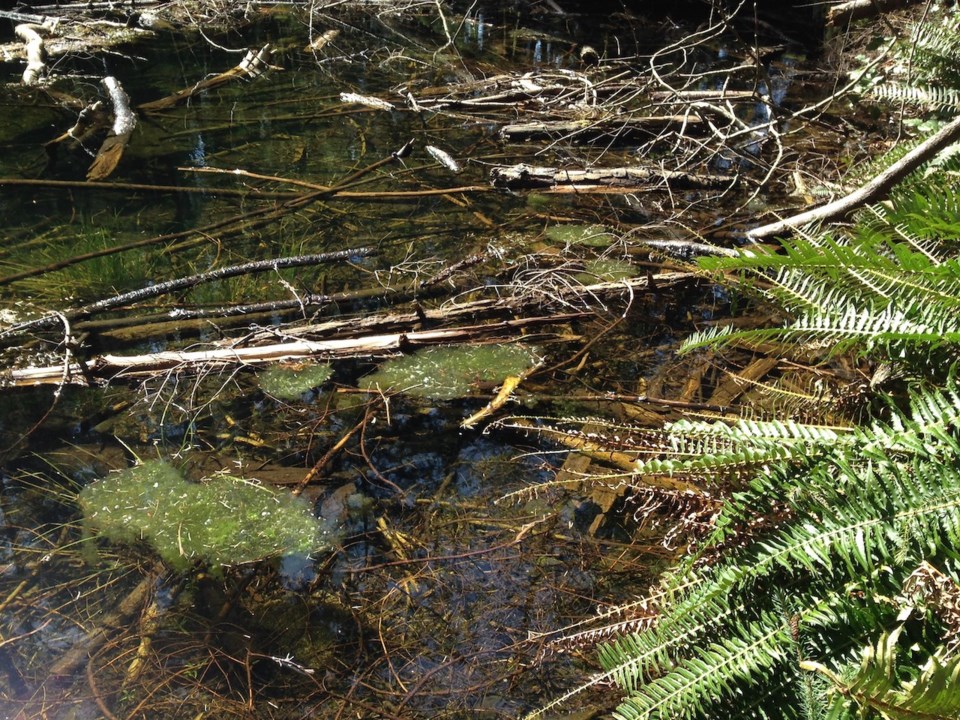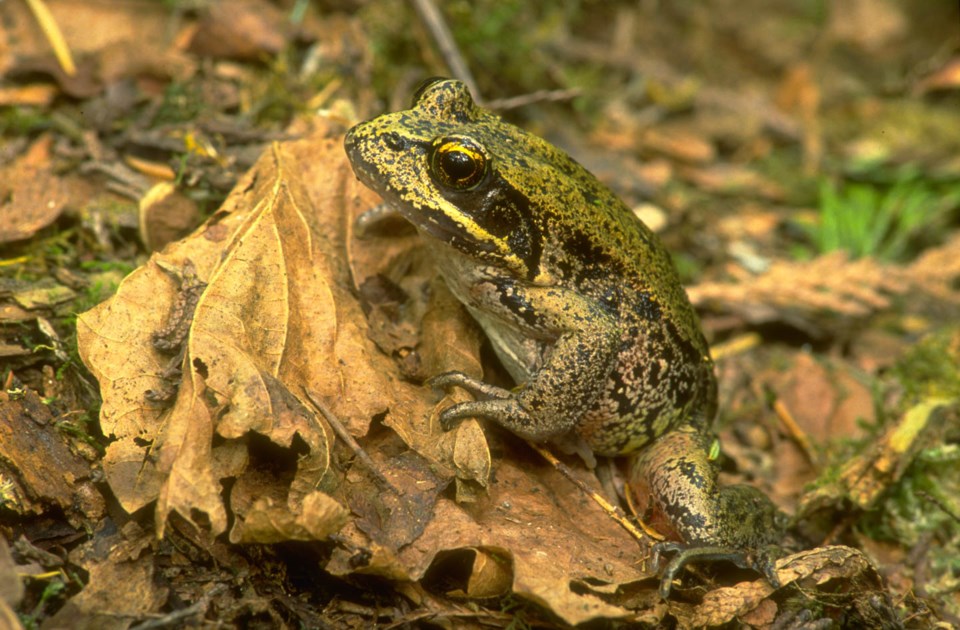Any day now we will see the jelly ball egg masses of two very different amphibians gracing our local ponds and deeper wetlands.
The earliest spawner is the red-legged frog (Rana aurora), which lays its eggs in late winter to early spring, followed by the Northwestern salamander (Ambystoma gracile) which spawns from early spring to mid-spring. Both species deposit their egg masses in relatively deep water, 0.5 to 2 metres below the surface, usually attached to a submerged stick or stem.
A few key differences distinguish pond creatures’ spawn.

Red-legged frog egg masses are generally between the size of a softball and a cantaloupe. Each egg is surrounded by a wide layer of jelly and there is no distinct outer jelly ball. Many egg masses can be laid close together and, just before hatching, this frog’s egg mass commonly floats to the surface where it becomes more of a frothy-looking mat rather than a ball.
Northwestern Salamander egg masses are a bit smaller –between the size of a baseball and a softball. The eggs are closer together and embedded in a firm, smooth or bumpy outer jelly ball and green algae can be seen growing inside the jelly of each individual egg.
The Pacific treefrog (a.k.a. chorus frog, Hylla regilla), more often heard than seen, spawns later –between early spring and early summer, usually in shallower ponds and seasonal pools where the water is less than half a metre deep. Its egg masses are usually between the size of a golf ball and a large plum and the eggs are small and close together. If you’re taking a closer look at an egg mass that’s not too deep, do not dislodge it from its supporting plant and, better yet, use binoculars or a good camera.
We Bowen Islanders love our amphibians. We are very lucky on Bowen because, although these species are also common in suitable and sufficiently undisturbed habitats over on the mainland, the degree of habitat fragmentation is much, much greater on the mainland. Also native species on the mainland and Vancouver Island are increasingly being displaced by the invasive bullfrog, which has not yet reached Bowen Island. Let’s continue to enjoy these beautiful creatures by ensuring that we don’t disturb their eggs.
The best way to protect them is to keep our water-loving dogs away from known egg masses until after the tadpoles have hatched and, of course, to make sure their natural spawning habitats aren’t drained, silted-up or filled-in.
Remember, later in the spring, if you find a grapefruit-sized jelly ball containing no eggs, it was likely a salamander’s, not a frog’s. Also, later in the season, the tadpoles will be visible in the water. If you’re curious to know what species they are, feel free to contact the Bowen Nature Club (info below).
Since 1985, Bowen Nature Club members have been dedicated to the enjoyment, understanding, and preservation of Bowen Island’s diversity. For more information, visit bowennatureclub.blogspot.com/



